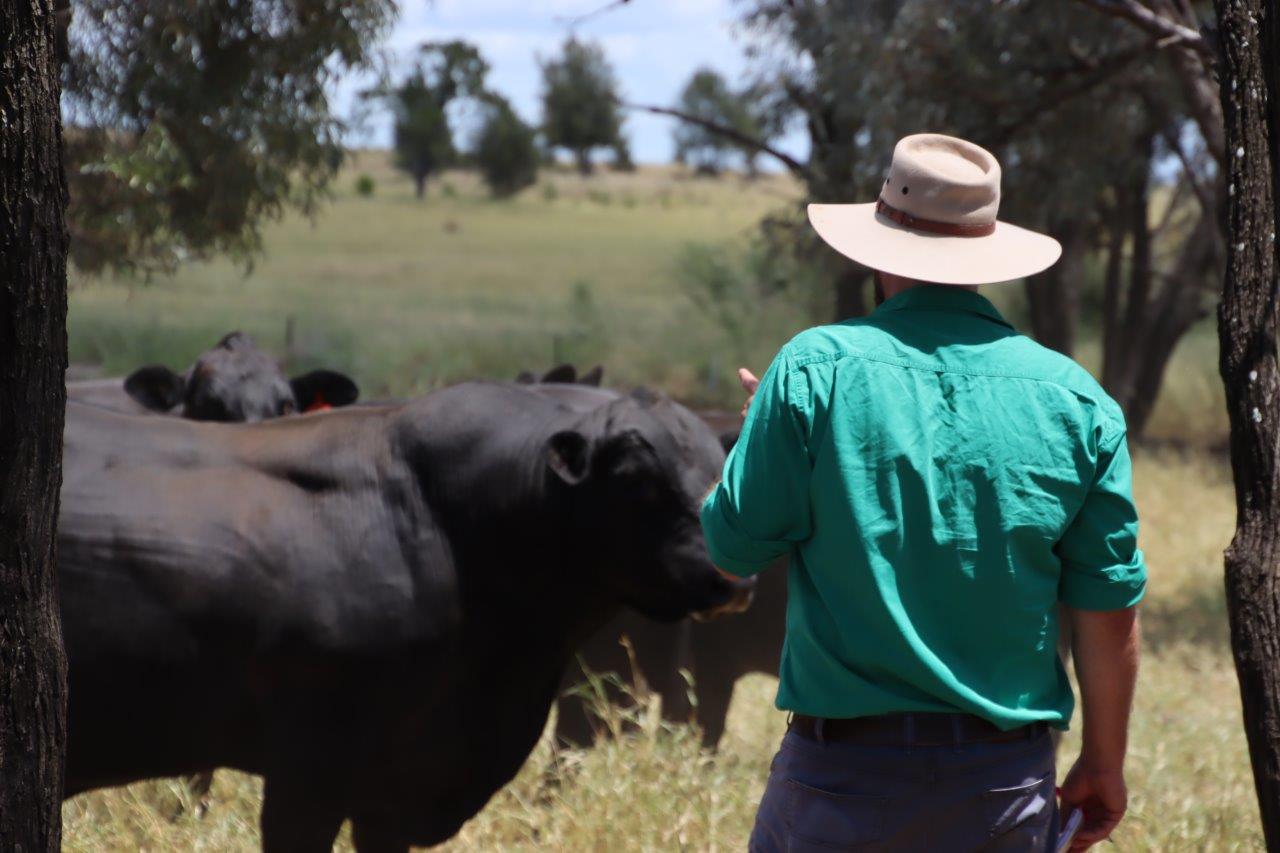Choosing the best bulls for your business

When it comes to sourcing the next sire – or team of sires – for your herd, extensive research before sale day can make all the difference.
“Purchasing bulls is a significant investment and the decisions you make have a long-term impact on your business,” Department of Agriculture and Fisheries beef extension officer Tim Emery said.
“The bulls ultimately drive the genetic direction of your herd. Why not use the available information and tools to take the guesswork out of your purchasing decisions?
“Identifying in advance a shortlist of bulls aligned with your breeding objectives will give you more time to conduct a rigorous assessment of each bull’s structure and temperament on sale day.”
Things to consider
Mr Emery recommends doing your due diligence on possible new sires well before sale day by looking at:
- estimated breeding values (EBVs)
- dam’s calving interval
- genetic conditions
- horn/poll status
- BULLCHECK report (including morphology)
- vaccination history
- not persistently infected (PI) or carriers for pestivirus
- feeding regime
- the seedstock producers’ breeding objectives and management
- pictures and videos of each lot (usually available pre-sale).
“Develop a thorough process that minimises risk to your business – there’s enough risks to deal with already,” Mr Emery said.
“I recommend supporting seedstock producers that provide objective information to help you make an informed decision.”
More about EBVs
Estimated breeding values (EBVs) have assisted with genetic improvement for 40 years and provide useful insights into what’s ‘under the hood’.
“EBVs are just one part of the bull buying process – fertility, structure and temperament are certainly some of the other big-ticket items,” Mr Emery said.
“EBVs are essentially a blueprint for how, on average, that bull is likely to influence his progeny.
“Over the years, EBVs have been shown to provide an accurate prediction of genetic merit in various breeds, locations and traits.
“At the moment, you can only compare EBVs within breed, however, the Repronomics, Northern Steer BIN and Southern Multibreed projects are helping develop multibreed EBVs.”
Mr Emery recommends defining your breeding objectives, then choosing the most appropriate selection index for your operation, along with individual EBV traits that help meet your breeding objectives.
“Although hard copy bull sale catalogues are useful, they are often printed months in advance, meaning the EBVs can be out of date by sale day.
“The latest EBVs are found in the web services area of your relevant breed society, which can be accessed through your society’s website or the BREEDPLAN website.
“The powerful search and sort functionalities allow you to narrow down your selections to align with your breeding objectives.”
On sale day
While sale day can be exciting, it can present distractions that impact your ability to focus on the task at hand.
Mr Emery said purchasers who had researched and shortlisted in line with their breeding objectives could be more targeted with their inspections and have more time to critically assess structure and temperament on sale day.
“Have an ordered process for assessing each bull so you don’t miss anything (making notes is helpful), then simply cross off the bulls that don’t stack up,” Mr Emery said.
“Setting a budget is recommended, as it can be easy to get caught up in the sale hype.
“It’s also a good idea to take out insurance on your purchases.”
Ongoing monitoring
Mr Emery encourages producers to keep an up-to-date bull inventory and track the genetic merit of their bull team each year.
“As more data feeds into BREEDPLAN, the EBVs will change (for better or worse), so be sure to check they are still taking you in the direction you want to go,” he said.
“To minimise risk, it is suggested you do a BULLCHECK on each bull every year, administer annual vaccinations and manage body condition score appropriately.”
A friendly reminder
“When you’re making annual sire selections in a beef breeding operation, you’re in the driver’s seat,” Mr Emery said.
“There are plenty of tools and information to help you make the most informed decision you can to take your herd and business forward.
“If you’re still unclear about using EBVs or bull selection, many avenues of assistance are available, including free advice from your local beef extension officer. You’ll find their details on the FutureBeef website (www.futurebeef.com.au/contact-us).
“You can also search ‘bull buying’ at www.futurebeef.com.au.”